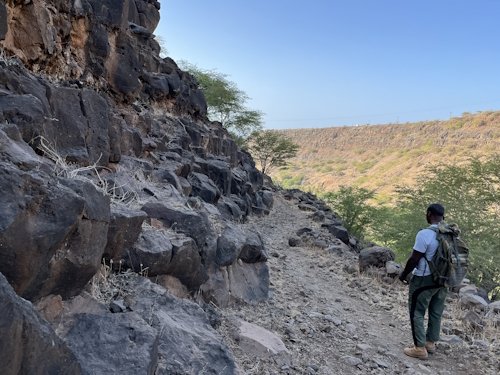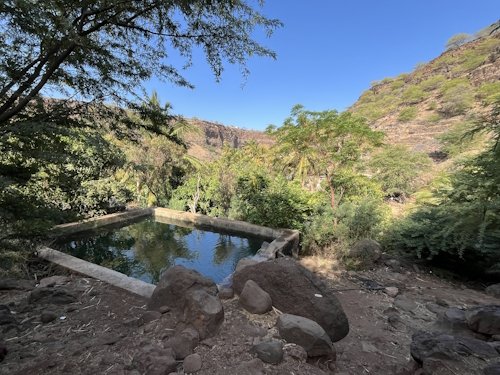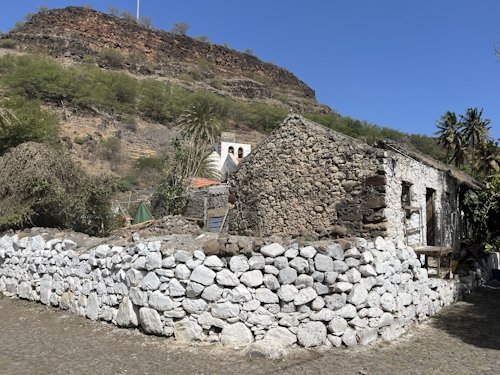Els Slots
Whs #956: Cidade Velha
Cidade Velha is an easy, short excursion from Santiago’s (and Cabo Verde’s) capital Praia. A bay, a few cobbled streets, remains of Portuguese fortifications and churches – you know what it looks like even before you have seen it. I tried a different approach for my visit and went for a guided hike through the Ribeira Grande Valley. This way I also ticked one of the other activity boxes I had for Cabo Verde: “Do a hike in the countryside” (as the archipelago is known as a hiker's paradise).

When you look at the official map of Cidade Velha WHS, you’ll notice that not only the seaside town is included but also a much larger area inland. The boundaries of the core zone follow the canyon that was carved out by the river Ribeira Grande. This area is linked to a specific part of the site’s OUV: the “acclimatisation and dissemination of numerous plant species between the temperate and tropical zones”. The Portuguese colonists experimented with various crops here in the 16th and 17th centuries, starting unsuccessfully with cereals but later finding out that plants from Africa’s mainland (coconut) and Latin America (maize) did well.
We started our hike in the village of Calabaceira. From there, a marked trail leads down into the valley. The guided hike is labelled as “an easy and accessible path for every hiker” by the tour company, but the volcanic soil is rocky all the time and especially going down you have to stay concentrated so as not to slip.
Already at the start, we saw a troop of Green monkeys (mammal migrants from West Africa); the guide said that they always run away to a higher spot on the cliffs when they see humans on the path – and that is what they did when we passed as well. The views here at the beginning of the trail are stunning as you look into the evergreen valley with a great variation of trees. This is in stark contrast to the rest of the island, which is pretty barren in the dry months of winter. There’s a natural spring here that provides water all year for irrigation.

Halfway down the ridge, we came across the first farms. Nowadays most farmers live in Praia and only come during the season to work the land (and return home in the evening). There’s a good variation in crops: two kinds of bananas, mangoes, papaya, tamarind, figs, and berries. The most popular plant however seems to be sugarcane, as it forms the main ingredient of the highly alcoholic drink grogue.
In the valley, we followed the dry river bed (flat, but still a lot of stones!). Here we stopped at a single huge baobab, said to be over 400 years old. Cabo Verde’s baobabs are linked to the visit of Charles Darwin to the island in 1873: his first real “taste” of tropical vegetation, and the longevity of baobabs got him thinking about the age of the earth. The specimen he saw apparently is no longer there , but this one must have been mature at the time and quite a sight as well. Like Darwin, we also saw several Grey-headed kingfishers – it’s funny to encounter a species of this globally common bird family not near water, but behaving the same as always: sit still on a branch and wait until an insect crawls by.

After 4km of walking, which took us 2 hours, we arrived on the outskirts of the town of Cidade Velha. We found a simple distillery squeezing the juice out of the sugarcane to prepare it for being turned into grogue. Sugarcane stalks also comprise the traditional material for the roofs of houses, as can be seen in the old street Rua da Banana.
More on
Els SlotsComments
No comments yet.
